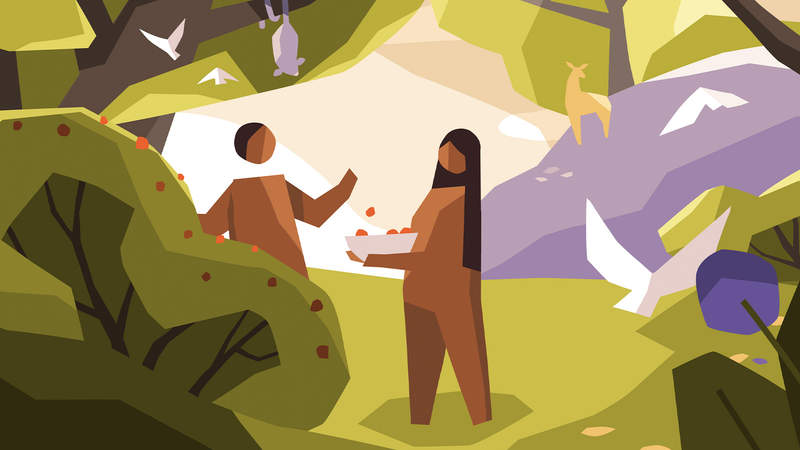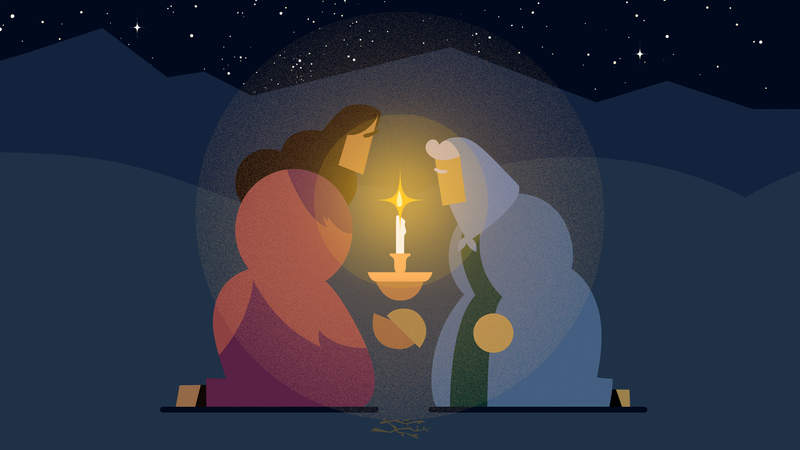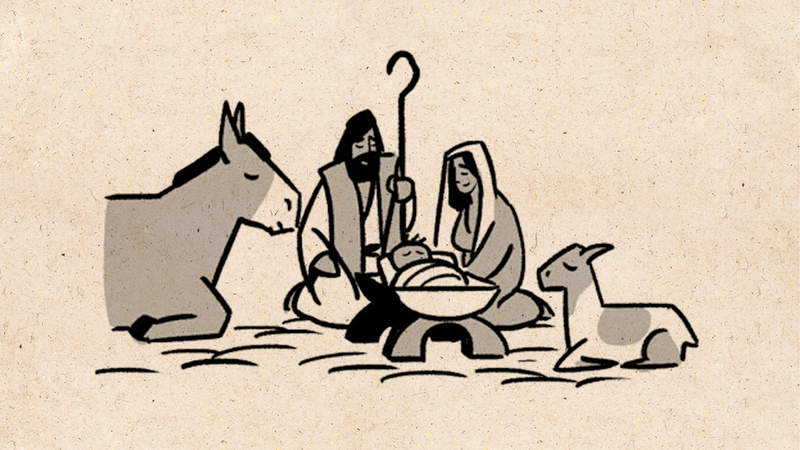3 Love Stories in the Bible That Help Us Rethink Romance
What Does the Bible Say About Romantic Love?
What comes to mind when you think about romantic love? A bouquet of red roses? Physical attraction? Dancing in the moonlight or sharing a candlelit dinner?
Maybe romantic love means being so strongly drawn to another person that you cannot imagine a life without them. Or maybe romantic love is about finding your “soulmate” or “the one”—the one who “completes you,” as Jerry Maguire put it. But is that the essence of real love or just part of it?
Does truly loving another person mean we will experience a sense of excitement similar to discovering a treasure, a sense that I've found something deeply valuable for me? Or is real love about something different, something more?
Love in the Bible
The concept of romantic love as we understand it today isn’t directly addressed in the Bible, partly because authors wrote and compiled it long before the Romantic era. We do have some racy love poetry in Song of Songs, and we have stories about loving relationships and marriages between people. But we don’t see relationships that look like modern dating—no boyfriends and girlfriends, no partners (in the way we think of romantic partners today), and no diamond rings and elaborate marriage proposals.
So what can we learn about romantic love from the Bible?
Let’s consider three stories of loving relationships in the Bible that will help us get to the heart of romantic love—not the popular expectations surrounding modern romance, but the essence of true love.
The First Man and Woman
In Genesis 1, God speaks creation into existence. We are then transported to a garden filled with trees, rivers, and animals (Gen. 2). Over and over, the authors show God declaring his creation “good” (Hebrew: tov), that is, until he sees the human (Hebrew: adam) alone. Now the authors introduce a problem—an intentional literary design move—as they show God saying it is “not good” for the human to be alone (Gen. 2:18). But why?
God solves the problem by first dividing Adam in half (Gen. 2:21). We often talk about this as though God took a rib from Adam and created Eve with it, but the Hebrew word tsela (often translated as “rib”) is never used as an anatomical term in any other passage in Scripture. Outside of Genesis 2, the word is mainly used to describe the architecture of the tabernacle or temple (e.g., Exod. 25-38; 1 Kgs. 6-7; Ezek. 41). The biblical authors use tsela to refer to the two halves of the ark of the covenant, the two halves of the temple, and the two halves of the new Jerusalem. So God’s creation of Eve is a process of dividing Adam in half and then building Eve from one side of him. We get a portrait of two humans, each one half of a united whole, deeply dependent on the other. Adam's goodness and life depends on Eve, and hers depends on his.
Then God calls this woman an “‘ezer kenegdo.” The Hebrew word ‘ezer might be translated as “help,” but it does not mean what we often assume. An ‘ezer is not a lesser “assistant” or “helper” as much as it is someone who plays a mutual role of “the indispensable other,” a strong and wise guide, without whom the intended good cannot happen. The only other character in the Bible given this title (‘ezer) is God himself. Not your average helper, right?
For the second Hebrew word, kenegdo, we might use a metaphor of mirroring to get to the core idea. A helpful paraphrase of Genesis 2:18 might be: “It is not good for the human to be solitary. I will make one who can deliver him from his inability to fulfill the divine commission alone, one who mirrors him.”
The biblical authors are presenting this bonded, united relationship between two people as God’s good design for humanity. The “one flesh” of Genesis 2:24 transcends the union of the sexual act (though that is one way the one-flesh unity may be experienced). So how is this idea different from the “you complete me” sentiment?
Adam and Eve "complete" one another not by satisfying each other’s personal desires but by becoming unbreakable partners who seek the other's well-being. Today’s popular understanding of romance rarely gets past the "satisfy my desires" sense of love. But the authors of Genesis describe this “unbreakable partners” sense of love as a foundation for human flourishing and tov—the goodness and right-functioning of creation itself.
In the final verse of Genesis 2, we discover that the man and woman were naked and unashamed—an image of pure trust, openness, vulnerability, and safety. When one is genuinely unified with another, there is no need for self-protection or projection of a false self. In their most vulnerable state, the man and woman were at rest. They had nothing to hide, no secrets or lies between them, no power grabs, hierarchies, or abuse. Instead they had a portrait of love at peace.

Ruth’s Expression of Loyal Love
Another story that helps us understand true love comes from the book of Ruth. Some see Ruth as the Hebrew Bible’s famous love story. Girl gleans in a field. Boy sees girl gleaning. Girl uncovers boy’s feet (we’ll have to unpack that one later). Boy marries girl. A baby is born. The end. It’s like a Hallmark movie, yeah? Maybe not? What if it’s not like a modern love story at all?
The story begins with an Israelite family in the land of Moab. Naomi and Elimelech have two sons who are married to Moabite women, one named Ruth and the other Orpah. Tragically, Naomi’s husband and two sons die. All Ruth and Orpah have left is their widowed mother-in-law, Naomi, who has nothing to give them. Naomi says she will return to her hometown, Bethlehem, and that Ruth and Orpah should stay in Moab with their own people (Ruth 1:11-13). Naomi has nothing more to give Ruth or Orpah that might “complete them” or satisfy them, and she warns against staying with her because doing so will surely bring more suffering.
Orpah agrees with Naomi’s logic, but Ruth expresses true love toward Naomi through a profound commitment, saying, “Where you go, I will go. Your people will be my people, and your God will be my God” (Ruth 1:16). Ruth promises to stay by Naomi’s side and take care of her. As the story unfolds and other people see Ruth’s loyalty to Naomi, they call her actions “loyal love,” or in Hebrew, khesed (Ruth 3:10-11). Khesed is marked by deep feelings of affection shown through acts of generosity and forgiveness and a commitment to the other’s well-being. It is an outward expression of real love.
Ruth’s khesed is not conditional or based on what Naomi can do for her. Her khesed is a gift—an outpouring of her loving character.
Later in the story, Boaz can’t help but notice Ruth’s loyal love (Ruth 3:11). He blesses her, and she reciprocates with loving generosity, leading to his desire to marry her. The authors parallel his loving commitment to Ruth’s—Boaz embraces the way of loyal love toward their family.
What kind of love is this? Could love between a mother and daughter-in-law teach us what it means to love someone romantically? The Bible gives us a beautiful picture of true love even though it doesn’t fit into most modern ideas about romantic love. Wouldn't the best, most intense and fulfilling romantic relationship a person could experience be one where each person in the relationship acts in ways that preserve, protect, and cause flourishing for the other? To give and not take? To consider the other’s needs above their own? To humbly sacrifice for the mutual blessing, shalom (Hebrew for “peace” or “wholeness”), and tov of the other?

How Joseph Loves a Pregnant Mary
Finally, we turn to the New Testament’s Christmas story—wait, what? We associate angels, shepherds, and wise men with the Christmas story, but romance? Stick with us. There is something profound to learn about love from a character who does not have a single line in the story.
Matthew’s Gospel tells us that Joseph was betrothed to Mary. In their world, betrothals were more serious than modern wedding engagements. The two were legally bound to one another, though they didn’t yet live together or consummate their relationship. During the betrothal time, Mary discovers that she is pregnant—and the baby is not Joseph’s (Matt. 1:18). Imagine being Joseph in this scenario. What is he supposed to do? In their culture, this would have been humiliating to both Mary and him.
Joseph shows lovingkindness to Mary by deciding to divorce her quietly (Matt. 1:19). That doesn’t seem very loving, but consider the cultural context. Joseph could have preserved his own reputation by publicly shaming Mary. He could have told everyone she was pregnant with a child that wasn’t his, leaving her to carry the burden alone. But Joseph won’t do it. He shows mercy toward Mary.
The authors say he wants to divorce her quietly because he is a “righteous” (Greek: dikaios) man. This word in Greek is deeply relational, describing someone doing right by another person and treating others as infinitely valuable creations of God. What could be more loving than treating someone with mutual respect and acknowledging that God built them for honor, blessing, and endless lovingkindness? Joseph wishes Mary no harm. He chooses to care for her.
Joseph is later awakened by a messenger, an angel, who instructs him not to divorce Mary. For Joseph, a quick and quiet divorce instinctively looked best for everyone involved. But Joseph chooses to trust the angel and, again, acts in a way that cares for and blesses (or gives life to) Mary—a picture of true love.
Most of us aren’t getting angelic instructions about who to stay romantically involved with. Wouldn’t that be nice? But we can still choose to act in love toward others in the way that Joseph did. Are we loving another person because of what they can do for us, or are we loving them so that they can be built up, cared for, and blessed with life? Are we choosing to do right by the other person regardless of what they can do for us?

Jesus Displays the Ultimate Example of Love
We began our journey in a garden, and we conclude in a garden to see one of the greatest ever examples of real love.
In the garden of Gethsemane, Jesus is facing certain death. He’s been betrayed, and the killers are closing in. He can stay true to what God has asked him to do, which includes being brutally murdered, or he can break from God’s will and either fight back with violence or simply run away. And he wrestles with the choice—“Please, remove this cup [this responsibility] from me,” he pleads, asking his Father in Heaven if there is any other way (Luke 22:42a). Like every human, he instinctively wants to survive. But he doesn’t operate on instinct alone, saying to the Father, “Not what I will, but what you will” (Luke 22:42b). Even though what God has asked him to do will cause significant suffering, Jesus stays. He gives himself for the well-being of all humanity and creation. In love, he gives himself for the sake of others.
Jesus is God’s khesed in human form, and his love restores life and partnership between God and humanity. In humility, Jesus chooses to value others above himself. He does not look to his own interests but instead to the interests of the others (e.g., Phil. 2:3-4). This kind of love asks: What is best for the other? How can I best care for and bring life to the other?
The Apostle John says, “This is how we know what love is: Jesus Christ laid down his life for us” (1 John 3:16). The heart of true love is the willingness to give oneself to another, creating an ecosystem of others-focused, self-giving love. Surely this is the kind of love so many of us are looking for.

What Do We Really Want?
Those who remain skeptical toward popular ideas of romantic love might argue that the idea of finding “the one” or a single person who “completes” you for the rest of your life is ridiculous. After all, one person could not possibly satisfy all of your needs or make you happy or fulfill your deepest desires for the rest of your life. The biblical authors might very well agree with this conclusion.
The stories in the Bible seem to collectively suggest that no single human being can satisfy your needs. And the expectation to do all of that might end in disappointment and confusion. But what if that wasn’t bad news? What if that self-focused approach is a trap and is not truly the “romantic” love we really want? What if the Bible’s definition of real love is deeper, more passionate, and more human?
What happens when romantic love becomes outwardly expressive? What if love meant working alongside one another for the flourishing and tov of the world? What if it meant doing right by the other person, even through suffering or at the expense of your immediate satisfaction? What if it meant taking actions to preserve and protect the other?
What if romantic love was actually not something you fall into but something you choose—something as difficult as it is fulfilling?
Maybe this doesn’t sound ideal. Roses and champagne and long walks on the beach seem much more appealing. Maybe love can start with feelings of attraction and desire, and maybe those initial feelings can expand and deepen when we are putting the other person’s well-being above our own while they are simultaneously doing the same for us. Can you imagine someone seeing you, in all of your ordinariness and quirkiness and imperfection, and staying committed to you no matter what? And not just staying but caring, forgiving, blessing, and loving without end, all while you’re doing the same in return?
In all our relationships, romantic and otherwise, may we look to Jesus and his ultimate example of what it means to love another person. What wondrous love is this? “To lay down one’s life for one’s friends” (John 15:13).
This article was written by Shara Drimalla in collaboration with Dr. Ben Tertin. Additional scholar research and resources provided by Dr. Tim Mackie and Dr. Carissa Quinn. Copy-edited by Kenzie Halbert-Howen with additional editorial support from Mike Fleming.